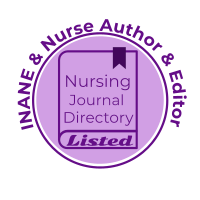Injury documentation: Using the BALD STEP Mnemonic and the RCMP Sexual Assault Kit
DOI:
https://doi.org/10.29173/cjen432Abstract
Injury assessment, nomenclature and documentation vary widely across emergency departments. The Royal Canadian Mounted Police (RCMP) has forensic laboratories across Canada and performs the majority of testing of evidence for Canadian victims of sexual assault outside of Ontario or Quebec. Most emergency nurses are familiar with the large box the RCMP officers bring for the documentation and collection of evidence after sexual assault. Fewer are familiar with the inner contents of the kit or documentation. The sexual assault kit and documentation are now undergoing change, with a new kit soon to be released. The RCMP forensic laboratories identified the need for kit changes due to equipment updates and research related to quality and best practices. Some health care professionals across the country and representatives of Making a Difference Canada were consulted for suggestions on documentation and kit contents. Mount Royal University’s Forensic Research Network (www.mtroyal.ca/forensicresearch) will be developing free educational materials on the kits and use of contents in preparation for the release of the new kits (hoped to be late 2011, but not yet determined). In the meantime, the focus of this article is to introduce emergency nurses to a few key changes in documentation and evidence collection they may anticipate. The largest of these changes is the adoption of a mnemonic phrase to aid in standardization of injury documentation and assessment known as BALD STEP.References
Apfelbaum, J.D., Shockley, L.W., Wahe, J.W., & Moore, E.E. (1998). Entrance and exit gunshot wounds: Incorrect terms for the emergency department? Journal of Emergency Medicine, 16(5), 741–745.
Bariciak, C.D., Plint, A.C., Gaboury, I., & Bennett, S. (2003). Dating of bruises in children: An assessment of physician accuracy. Pediatrics, 112(4), 804–807.
Carter-Snell, C.J. (2007). Understanding women’s risks for injury from sexual assault. University of Alberta. Retrieved from http://www.snellconsulting.org or Canadian Nurses Association library.
Gall, J.A., Goos, S.C., Payne-James, J.J., & Culliford, E.J. (2003). Forensic medicine. Edinburgh: Churchill Livingston.
Girardin, B.W., Faugno, D.K., Seneski, P.C., Slaughter, L., & Whelan, M. (1997). Color atlas of sexual assault. St. Louis: Mosby.
Golden, G.S. (1994). Use of alternative light source illumination in bite mark photography. Journal of Forensic Sciences, 39(3), 815–823.
Langlois, N.E., & Gresham, G.A. (1991). The ageing of bruises: A review and study of the colour changes with time. Forensic Science International, 50(2), 227-238. Retrieved from http://search.ebscohost.com/login.aspx?direct=true&AuthType=ip,url,cookie,uid&db=cmedm&AN=1748358&site=ehost-live
LeBeau, M., Andollo, W., Hearn, W.L., Baselt, R., Cone, E., Finkle, B., ... Saady, J. (1999). Recommendations for toxicological investigations of drug-facilitated sexual assaults. Journal of Forensic Sciences, 44(1), 227–230.
Lynnerup, N., Hjalgrim, H., & Eriksen, B. (1995). Routine use of ultraviolet light in medicolegal examinations to evaluate stains and skin trauma. Medicine, Science and the Law, 35(2), 165–168.
Mosqueda, L., Burnight, K., & Liao, S. (2005). The life cycle of bruises in older adults. Journal of the American Geriatrics Society, 53(8), 1339–1343.
National Forensic Nursing Institute. (2006). T-blue swabs. Retrieved from http://www.nfni.org
Nelson, D.G., & Santucci, K.A. (2002). An alternate light source to detect semen. Academic Emergency Medicine, 9(10), 1045–1048.
Sheridan, D.J., & Nash, K.R. (2007). Acute injury patterns of intimate partner violence victims. Trauma Violence & Abuse, 8(3), 281–289.
Slaughter, L., Brown, C.R., Crowley, S., & Peck, R. (1997). Patterns of genital injury in female sexual assault victims. American Journal of Obstetrics and Gynecology, 176(3), 609–616. Sommers, M.S. (2006). Injury as a global phenomenon of concern in nursing science. Journal of Nursing Scholarship, 38(4), 314–320.
Stephenson, T., & Bialas, Y. (1996). Estimation of the age of bruising. Archives of Disease in Childhood, 74(1), 53–55.
Vogeley, E., Pierce, M.C., & Bertocci, G. (2002). Experience with wood lamp illumination and digital photography in the documentation of bruises on human skin. Archives in Pediatric & Adolescent Medicine, 156, 265–268.
Downloads
Published
How to Cite
Issue
Section
License
The Canadian Journal of Emergency Nursing is published Open Access under a Creative Commons CC-BY 4.0 license. Authors retain full copyright.




